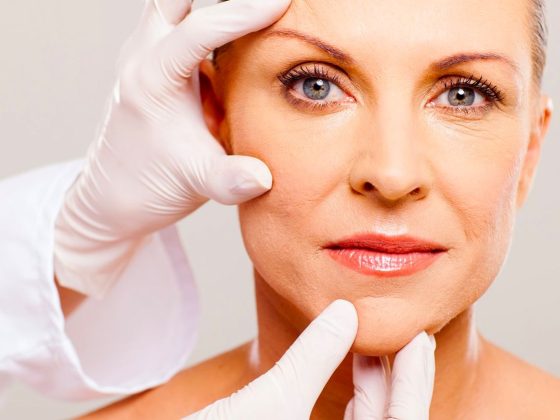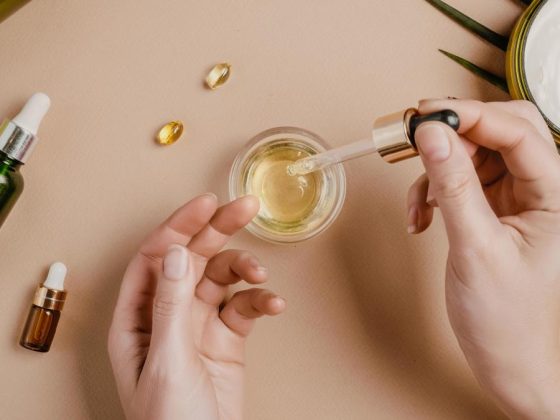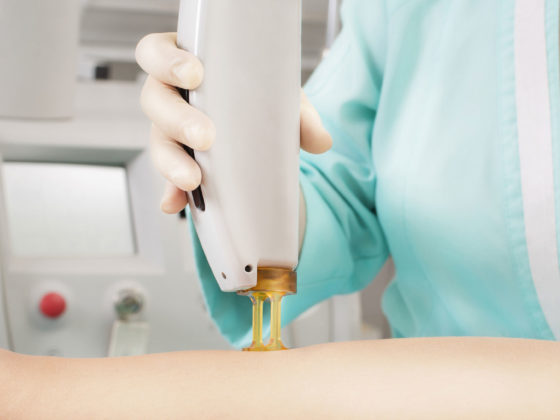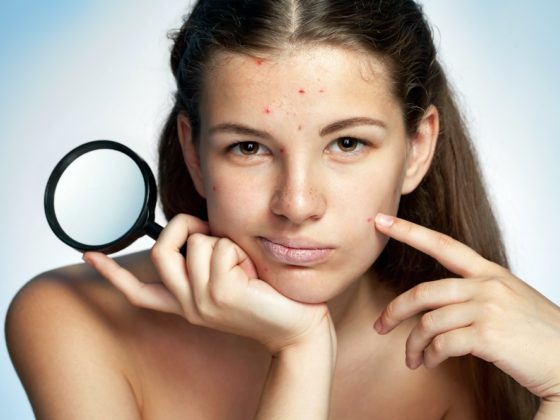Clients often complain about dry skin, especially in the cold winter months. Dry skin can result in flaky, rough surface texture, and a feeling of tightness and even itchiness. If left untreated, dry skin can become inflamed and lead to redness and discomfort. Dry skin does not directly cause wrinkling or poor elasticity, but it can definitely make these aging symptoms look worse.
TWO TYPES OF DRY SKIN:
Dehydrated Skin
When most clients complain about dry skin, they are referring to skin dehydration, the most frequent type of dry skin. It is often caused by unprotected exposure to cold weather, low humidity, indoor heat, or lack of proper skin care. Skin that is dehydrated often presents as a flaking, tight, crinkly surface, with the client reporting discomfort.
Dehydrated skin lacks water in the surface cells. It is often also lacking lipids in the epidermal matrix—the lipid complex between epidermal cells that holds water in the skin and prevents water loss from cells to the dry environment. This is often referred to as impaired barrier function.
Overly aggressive cleansers, solvent ingredients that dissolve surface sebum, and overuse of exfoliating treatments or products can also cause or worsen dehydration by removing too much protective lipid. It can also be related to lack of water intake and some medications or medical conditions such as autoimmune diseases, diabetes, hormonal imbalances, and thyroid conditions.
Alipidic skin
Alipidic skin, also known as oil-dry skin—skin that lacks oil as opposed to water—is not producing enough sebum and presents as invisible or very small pores during a skin analysis. The follicles are narrow due to the tiny amounts of sebum being produced by the sebaceous glands.
Alipidic skin is often also dehydrated due to the lack of protective sebum on the skin’s surface, which allows moisture to escape the skin’s surface and evaporate into dry air.
TREATING OIL-DRY AND DEHYDRATED SKIN
During analysis, observe the pore structure and distribution of pores across the face. If you see visible pores that cover the entire face, the sebum production is likely normal. Very large pore appearance, often also accompanied by comedones and impacted follicles (clogged pores), indicates oily skin. When pores are smaller or appear to be invisible, this is alipidic skin.
Alipidic skin requires supplemental emollients in treatment product to help protect this skin that is so vulnerable to dehydration. These may include a variety of emollient ingredients, including natural plant oils like borage, safflower, sunflower, and others. Synthetic emollients like petrolatum and silicones such as dimethicone can provide excellent protection against dehydration. Other fatty plant oil derivatives such as caprylic/capric triglycerides or shea butter are also good protectant emollients. The amount of emollient used in the product will determine the product viscosity (cream versus lotion); products have variable emollient content to address various levels of dryness severity.
Almost all dry skin products will also contain humectants, also known as hydrating agents. These ingredients attract and hold water in the skin surface and include ingredients like glycerin, sodium hyaluronate (hyaluronic acid ester), sodium PCA, and natural ingredients like seaweed extracts.
Most products for dry skin contain a mix of both emollients and humectants. Products are formulated for various degrees of dryness. A moisture cream for dry skin will contain high levels of both emollients and humectants, while a lotion for combination-dehydrated skin will contain less emollient. Sometimes clients will choose a heavier moisturizer with lots of emollient, thinking it is more effective, but it will only work if they have oily-dehydrated skin; otherwise, the product will cause oiliness and possibly impacted follicle or related acne issues. In such cases, a non comedogenic moisturizer is required.
Possibly the most effective ingredients for dry and dehydrated skin are lipid-replacement ingredients such as ceramides, cholesterol, linoleic acid, and sphingolipids. These highly effective ingredients work by patching the mortar between cells in the epidermis, helping to dramatically boost moisture in the skin. This not only helps with hydration and symptoms of dryness, but can also reduce skin redness and improve the appearance of wrinkles and lack of firmness.
CLINICAL TREATMENTS
Hydrating treatments can help dramatically boost hydration. The use of steam, quality hydrating products, facial massage, microdermabrasion devices, and stimulation through devices such as high frequency can help improve hydration. Mild exfoliation—not strong peels—such as gentle enzymes and low-level acid peels can help remove dry, dead, dehydrated cell buildup, and stimulate cell turnover to reveal younger cells and improve intercellular lipid production.
MUST-DOs for Dry Skin
- Use protective moisturizers that contain petrolatum, plant-derived emollients, or silicones to help prevent water loss in less humid, cold, or windy environments. It is best if these also contain a broad-spectrum sunscreen.
- Ceramides, hyaluronic acid serums, and other lipid ingredients can be incorporated in products to help improve barrier function.
- Use gentle exfoliants to remove dead, dried surface cells.
- Make sure to choose products appropriate for the individual skin type.
- Hydrating facial treatments can help boost moisture and speed recovery.
- Physically protect skin from wintry conditions with a hat, scarf, glasses, and gloves.
References:
- Healthy Beautiful. (2019). Top 12 Best Non Comedogenic Moisturizers of 2019 (Acne Prone Skin). [online] Available at: https://healthybeautiful.com/best-non-comedogenic-moisturizers-for-your-face/
- Lodén, M. (2003). Role of topical emollients and moisturizers in the treatment of dry skin barrier disorders. American journal of clinical dermatology, 4(11), 771-788.
- Lodén, M., & Maibach, H. I. (Eds.). (1999). Dry skin and moisturizers: chemistry and function. CRC press.
- Sagiv, A. E., Dikstein, S., & Ingber, A. (2001). The efficiency of humectants as skin moisturizers in the presence of oil. Skin Research and Technology, 7(1), 32-35.
- Spencer, T. S. (1988). Dry skin and skin moisturizers. Clinics in dermatology, 6(3), 24-28.








